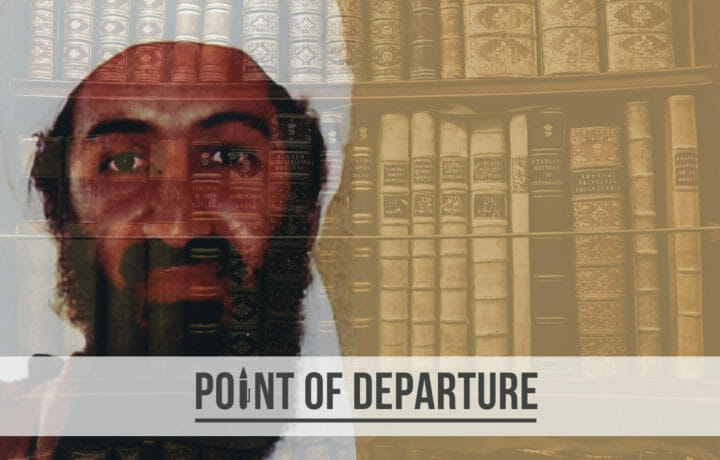In the early morning hours of May 2, 2011, a team of U.S. Navy SEALs infiltrated Osama bin Laden’s remote Abbottabad compound of, killing the terrorist leader and ending a manhunt that began shortly after the 9-11 attacks. Operation Neptune Spear was a resounding success, producing a veritable treasure trove of intelligence that officials hoped would reveal ongoing al Qaeda planning, potential locations and identities of terrorists and terrorist groups, and clues to what the future might hold for American and her allies.
After the raid on Wasiristan Haveli, an interagency task force worked tirelessly to process the materials recovered from the compound to determine which of those materials presented intelligence value. As the task force continued its efforts, it produced a series of cables shared across the intelligence community that drew added attention to the underpinning materials—digital and hard copy documents, audio recordings, videos, and books—in search of clues that might provide added insight into the reclusive and elusive al Qaeda leader.
Public release—“in the interest of transparency and to enhance public understanding of al-Qaida and its former leader”—began four years later, on May 20, 2015. Successive “data dumps” followed: March 1, 2016; January 19, 2017, and November 1, 2017. Aside from some material of a more adult nature, bin Laden’s computer cache contained everything from beheading videos to Wallace and Gromit cartoons. The document tranche included family correspondence, publicly available U.S. Government documents, and an assortment of papers, articles, and religious material.
Understanding Osama – Top 10 From His Bookshelf
But, if you want to look into the soul of a man who locked himself away for five years in a walled compound with 100 chickens, a cow, and an ox, you need to look a little deeper. His bookshelf. The 2015 release painted a picture of a man obsessed with 9/11 conspiracy theories—not surprising given his role in those events—but his choice of English-language texts were informative, to say the least. What kind of books does a world terrorist leader read? The Twilight series? Self-help books? The latest book by Tony Robbins? The full list can be found here, but some stand out more than others.
1. Killing Hope: U.S. Military and CIA Interventions since World War II by William Blum
When you spend your days hiding from most of the free world, it helps to have a basic understanding of the people who are most likely to be searching for you. And the CIA was most definitely searching for Osama.
2. Handbook of International Law by Anthony Aust
A basic understanding of international law is necessary if you expect one day to stand before the International Criminal Court. Assuming, of course, you live to see that day.
3. America’s Strategic Blunders by Willard Matthias
We’ve made our share, that much is certain. When you’re literally counting the days hoping for another, this is probably a good read.
4. Black Box Voting, Ballot Tampering in the 21st Century by Bev Harris
Apparently, Putin wasn’t the only one interested in undermining voter confidence in our elections system.
5. Guerilla Air Defense: Antiaircraft Weapons and Techniques for Guerilla Forces by James Crabtree
Air supremacy is a scary thing when you’re stuck poking your head out of a cave every time you hear a fast mover overhead. Oh, and we have satellites, too. Peekaboo!
6. Military Intelligence Blunders by John Hughes-Wilson
A guy can dream, can’t he? From the minute he hit the caves in Tora Bora, you know Osama was praying for a major intelligence failure.
7. The Rise and Fall of the Great Powers by Paul Kennedy
On some level, you know Osama was hoping that he’d toppled “The Great Satan.” The fact that he didn’t must have annoyed him until the day he stared down an HK416.
8. Obama’s Wars by Bob Woodward
Frankly, you need to read the entire Woodward “Forever Wars” boxed set to understand the political mindset that drove the past 20 years. But, unfortunately for bin Laden, you also have to live long enough to read them all.
9. Oxford History of Modern War by Charles Townsend
This is a great table-top book, like those ones you see on HGTV with flowers, barns, or portraits on the covers. But you need a little more than a table-top book if you want to really understand modern war. The pictures are nice, though.
10. Rogue State: A Guide to the World’s Only Superpower by William Blum
To some people, I’m sure the United States seems like a rogue state. But we’re not. We’re more like a guy in a convenience story with a can of Twisted Tea. Unpredictable. And dangerous when provoked.
By the way, if you’re looking for a nice vacation property in Abbottabad, you won’t find Osama’s compound available on Airbnb. Unfortunately, Pakistani security agencies demolished the compound and its structures in February 2012. So, if you’re looking for a little getaway to catch up on your reading, you’ll have to look elsewhere.



